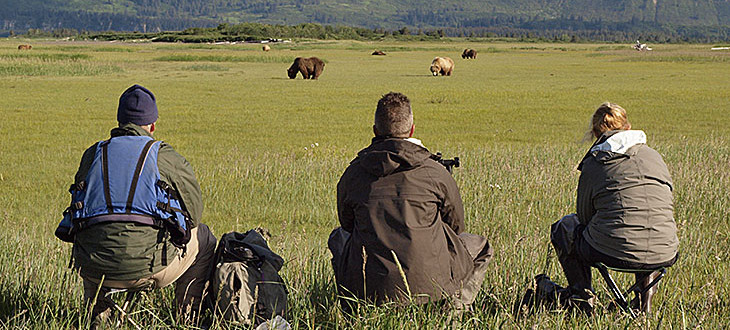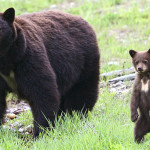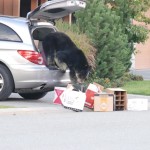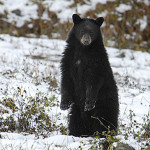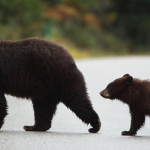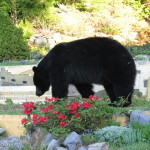Bear Viewing Today & Always
“Im afraid to even breathe.”
This, uttered in the smallest of whispers by a substantially large, typically exuberant Australian fellow sitting next to me in our open skiff, as we quietly bobbed offshore from where a young female Grizzly Bear dined on her stick full of breakfast mussels.
It’s what happens when I view grizzlies on their home range. It makes me want to hold my breath, to keep the spell going; it’s downright intoxicating.
Many people have never seen a grizzly close enough to actually observe their behavior, hear them chew and huff, see them scent the wind and gain a sense of the individuality of these creatures. They look so different from one another in colour, markings, body language and general carriage. They are intensely focused on food, which stands to reason when you consider how much grass, grubs, mice, bark, mushrooms, bulbs, insects, fruit, seeds, carrion and fish (sometimes) it takes to fill a bear’s belly. With plenty of food and no threats, they just go about their business.
Likely, most politicians have never observed a bear in such a way. In fact, the image of grizzlies that they hold may be rooted in misconceptions of fear and misunderstanding. Yet these same politicians are making policy decisions about the fate of grizzlies.
Re-framing mindsets about Grizzly Bears is a service to humanity. Consider this: that magical moment of wanting to whisper in the presence of a grizzly touches part of our brain that soothes the “fight or flight” response and bathes the nervous system with compassion and understanding. We make better decisions in such a state; that’s good for us and good for the grizzlies.
Caring about Grizzly Bears is a window into caring for all of Nature, of which we all are part.
By Val Murray, Justice for BC Grizzlies

